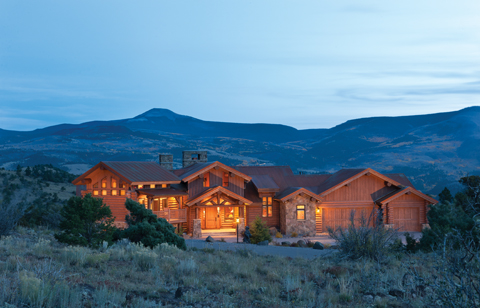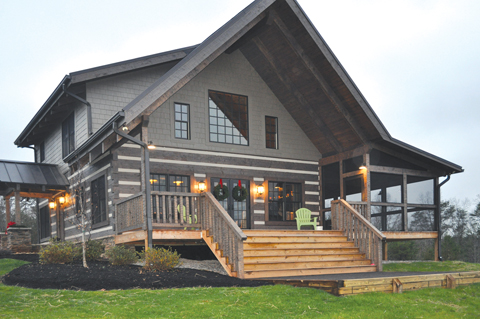There is a lot of specific terminology involved with log and timber frame homes. Sometimes it feels like a whole new language! From different building styles to joinery, it helps to know just what you’re talking about.
Often, you’ll hear references made to “milled” logs or “milled log homes”. What makes a log home milled, and how is it different from other log homes?
“A milled log home uses logs that are put through a saw mill or planer and cut to a specific profile or style,” explains Sarah Smith, marketing coordinator for Blue Ridge Log Cabins in Campobello, South Carolina. In contrast to handcrafted log homes, which use logs that are planed by hand to maintain natural variations, milled logs will be uniform in size and shape.
“Milled logs are typically a consistent size,” says Doug Parsons, president of Appalachian Log Structures in Ripley, West Virginia. “We drew up our own profile and had the planer knives made to match that profile so that we can put out the same piece of wood every time we put a log through our planer.”

Expedition Log Homes/photo by Roger Wade
Consistency = Cost Savings
That consistency in size and shape means that construction is easier and less costly. Much of the cost savings can be attributed to the lower labor demands for a milled log home. “Labor-wise, a milled log home is very easy to put up because you don’t have to preassemble, it can all be assembled very easily right on the site,” says John Batzer of Golden Eagle Log Homes in Wisconsin Rapids, Wisconsin.
Uniform, consistent logs mean that you’ll know exactly what you’re getting ahead of time. “Putting a piece of trim around a square timber is easier than trying to put trim around the end of a round beam that may not be perfectly round and may not be the same size on both ends,” says Parsons, adding, “I love round timbers but they are definitely harder to finish. That relates back to cost.”
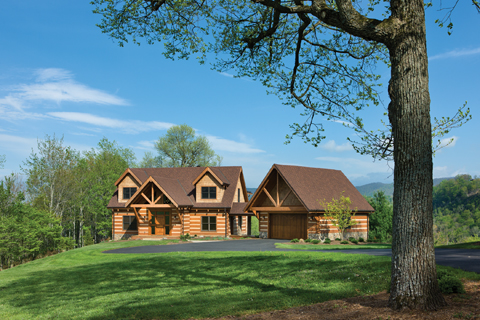
Country Comfort Log Homes/photo by Roger Wade
Form Meets Function
There’s no need to sacrifice style by choosing milled logs for your home, because you can make it as personal as you want in your designs. “We’ve done everything from simple hiking shelters to 10,000-square-foot homes that are very elegant and impressive,” says Parsons. “Most homes built in the past 30 years are on a piece of property that people have handpicked for themselves, and they have handpicked everything for the home. We have standard plans, but it’s just an idea starter,” he adds. Clients start with the plans and then modify them to suit their own dreams and their specific property.
Milled logs come in a variety of profiles and a choice of thicknesses. One popular profile is the D-log, which is flat on the interior walls and rounded on the outside, so you maintain the log cabin look with the ease a flat surface offers for décor purposes inside the home. Other styles include double round (round on both sides), tongue and groove, notched, and squared timbers. You can also choose from among different corner styles, including butt and pass, dovetail, saddle notch, and others, depending on what your log home producer offers and what look you are going for.
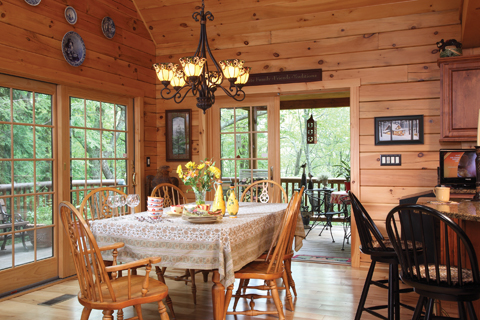
Photo by Franklin & Esther Schmidt
Milled Log Advantages
According to the National Association of Home Builders’ Log and Timber Homes Council, today the vast majority of log homes are constructed using manufactured or milled logs, accounting for an estimated 90 percent of the market. Some people just prefer the aesthetic look of a milled log home. “Often the primary reason would be price, but the secondary would be that someone doesn’t want their home to be quite as rustic as a handcrafted log home might be,” says Batzer. “The uniformity of the milled log might be more appealing to some.”
Others are keen on the predictability that comes with a milled log. “A big advantage of milled logs is that they are usually air or kiln dried to achieve specific moisture content,” says Smith. “This is beneficial because if a log is dried then you will not have to make provisions for settling or tightening up the logs later. The home will have a tighter fit and improved energy efficiency.”
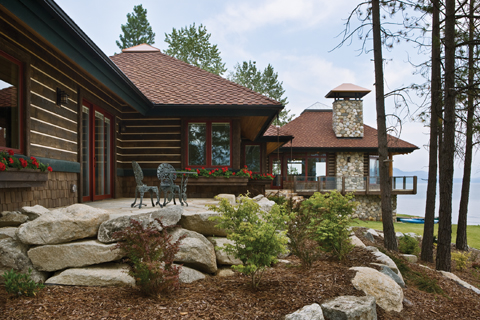
John Sayler Architect/photo by Roger Wade
Parsons notes that the project timeline is usually considerably shorter with a milled log home. “A handcrafted log home may take as much as two years to design and build, while a typical log home company can have a milled log home under roof in six months. That also affects the cost factor.”
Smith recommends that when you are choosing a milled log home builder, make sure that they use a “graded product.” The National Homebuilders Association’s Log and Timber Homes Council requires that all council members use graded logs, which means that they have been graded by a trained inspector based on the maximum allowable defects permitted in the log. This helps guarantee structural strength.
Maintaining the appearance of the wood after your home has been constructed is a concern whether you opt for a milled, handcrafted, timber frame, or hybrid home. “Without any treatment the logs will turn a darker grayish color, depending on the wood,” says Parsons. To protect the wood it’s important to keep the moisture off of it, so putting water repellant on the logs is a necessity.
In addition, it’s essential to protect the wood from ultraviolet (UV) rays, which can deteriorate the outer cells of the wood. “As they deteriorate, they not only change color but they also lose strength,” says Parsons. The UV protection in most commercial stains helps the wood stay stronger and also preserves the color.
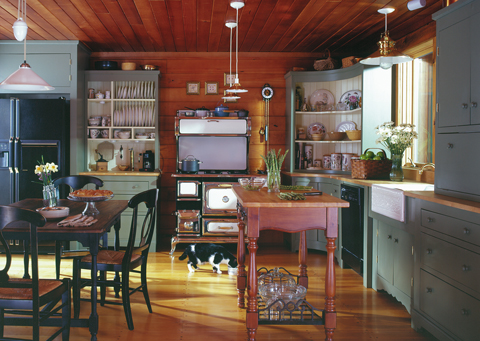
The Original Log Cabin Homes
“Often when people talk about maintenance, they talk about appearances, but the maintenance helps the life of the home as well,” says Parsons. Some of that protection can be built into the home design by incorporating roof overhangs, gutters, and landscaping, to make a significant difference in how long your home is going to last.
Whether your budget, timeline, and aesthetic preferences lead you to a milled log home, handcrafted, timber frame, or hybrid, make sure you’ve examined all of your options before the first log is put in place.

